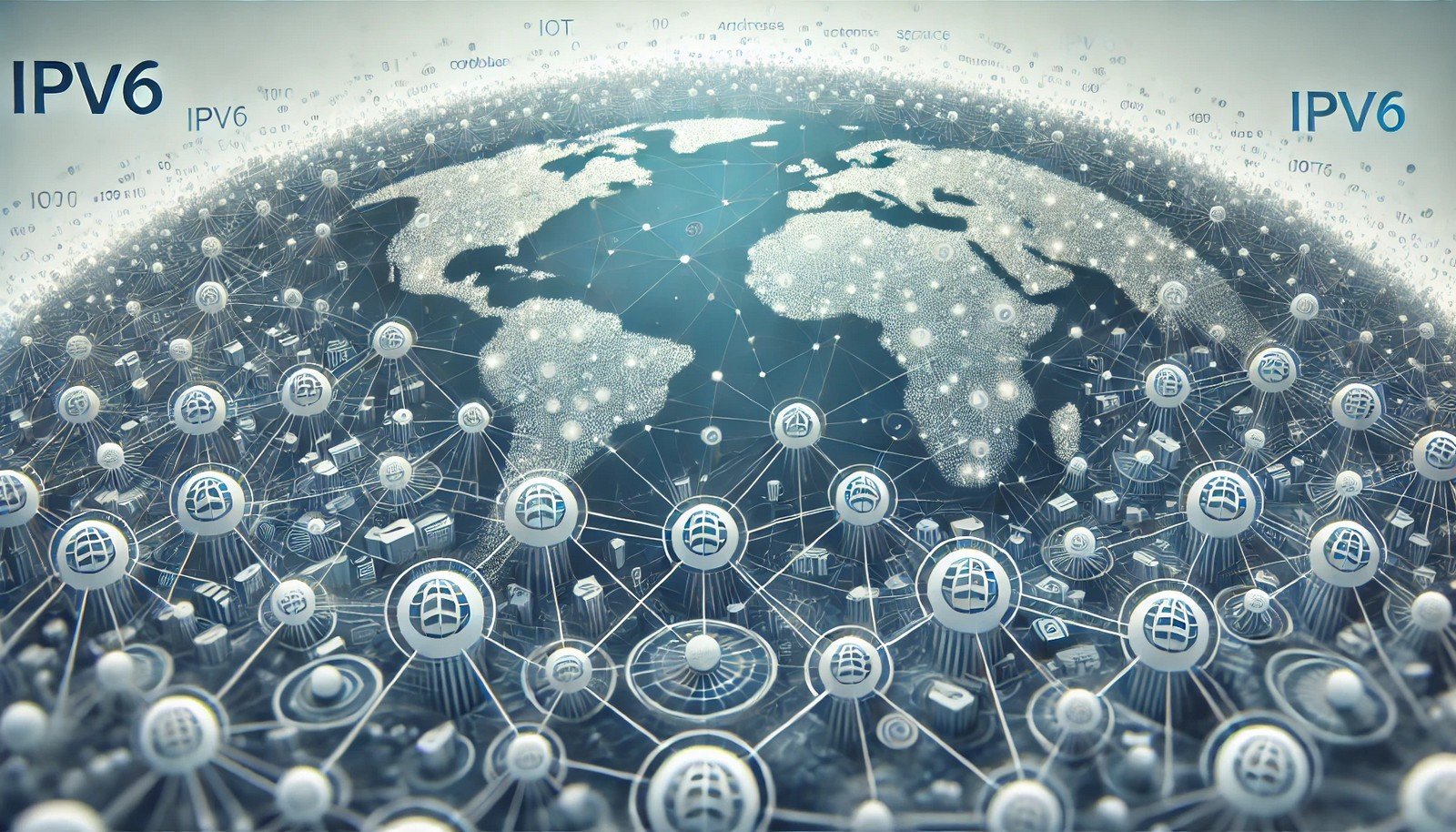IPv6
 (Representational Image | Source: Dall-E)
(Representational Image | Source: Dall-E)
Quick Navigation:
- IPv6 Definition
- IPv6 Explained Easy
- IPv6 Origin
- IPv6 Etymology
- IPv6 Usage Trends
- IPv6 Usage
- IPv6 Examples in Context
- IPv6 FAQ
- IPv6 Related Words
IPv6 Definition
IPv6 (Internet Protocol version 6) is the most recent version of the Internet Protocol (IP), designed to replace IPv4 due to the exhaustion of available addresses. It provides a vastly larger address space using a 128-bit address system compared to the 32-bit system of IPv4. IPv6 also enhances security, improves routing efficiency, and enables better support for mobile devices and IoT applications. Features such as autoconfiguration, hierarchical addressing, and built-in security make IPv6 a crucial evolution in internet communication.
IPv6 Explained Easy
Think of the internet as a giant network of houses, each with its own address so mail can reach the right home. In the past, we used a 32-bit address system (IPv4), but we ran out of addresses because so many new houses (devices) needed them. IPv6 is like a new addressing system that allows way more houses to have unique addresses, ensuring everyone gets their internet "mail" properly.
IPv6 Origin
IPv6 was developed by the Internet Engineering Task Force (IETF) in the late 1990s as a response to the growing shortage of IPv4 addresses. The formal standard was published in December 1998 as RFC 2460, and global adoption efforts have been ongoing ever since.
IPv6 Etymology
The name IPv6 stands for "Internet Protocol version 6," where "protocol" refers to the rules governing internet communication, and "version 6" signifies its sequence in IP versions.
IPv6 Usage Trends
IPv6 adoption has been steadily increasing as ISPs, enterprises, and governments transition from IPv4. Many modern devices and networks now support IPv6 by default. Key drivers of adoption include mobile networks, IoT expansion, and cloud computing, all of which require a vast number of unique IP addresses. However, full global implementation remains a work in progress, as many legacy systems still rely on IPv4.
IPv6 Usage
- Formal/Technical Tagging:
- Networking
- Internet Protocols
- Addressing - Typical Collocations:
- "IPv6 address allocation"
- "IPv6 transition mechanisms"
- "IPv6 packet header"
- "dual-stack IPv6/IPv4 deployment"
IPv6 Examples in Context
- Websites like Google and Facebook operate over IPv6 to support modern networking demands.
- Mobile carriers such as T-Mobile use IPv6 as the default protocol for cellular networks.
- IPv6 enables billions of IoT devices, allowing smart homes and cities to function efficiently.
IPv6 FAQ
- Why do we need IPv6?
IPv6 was developed to address the shortage of IPv4 addresses and to introduce more efficient networking features. - How is IPv6 different from IPv4?
IPv6 uses 128-bit addresses, while IPv4 uses 32-bit addresses, making IPv6 capable of providing trillions of unique addresses. - Can IPv4 and IPv6 work together?
Yes, mechanisms like dual-stack and tunneling allow IPv4 and IPv6 to coexist during the transition phase. - Does IPv6 improve security?
Yes, IPv6 includes built-in security features like IPsec, which encrypts and authenticates data. - Why is IPv6 adoption slow?
Many legacy systems and networks still rely on IPv4, making a full transition complex and expensive. - How do I check if I’m using IPv6?
You can visit websites like test-ipv6.com to see if your device is using IPv6. - Do I need to change my router for IPv6?
Some older routers do not support IPv6, so you may need a firmware update or a new router. - Is IPv6 faster than IPv4?
While IPv6 reduces some overhead, real-world speed differences are minimal for most users. - Which countries use IPv6 the most?
The highest IPv6 adoption rates are seen in the United States, India, Germany, and Belgium. - Will IPv6 ever run out of addresses?
Highly unlikely, as IPv6 provides approximately 340 undecillion (3.4 × 10³⁸) unique addresses.
IPv6 Related Words
- Categories/Topics:
- Internet Infrastructure
- Networking Protocols
- Cybersecurity
Did you know?
In 2011, Google and major companies tested IPv6 by running "World IPv6 Day," a global experiment to promote IPv6 adoption. The test was so successful that some companies enabled IPv6 permanently!
PicDictionary.com is an online dictionary in pictures. If you have questions or suggestions, please reach out to us on WhatsApp or Twitter.Authors | Arjun Vishnu | @ArjunAndVishnu

I am Vishnu. I like AI, Linux, Single Board Computers, and Cloud Computing. I create the web & video content, and I also write for popular websites.
My younger brother, Arjun handles image & video editing. Together, we run a YouTube Channel that's focused on reviewing gadgets and explaining technology.



Comments powered by CComment